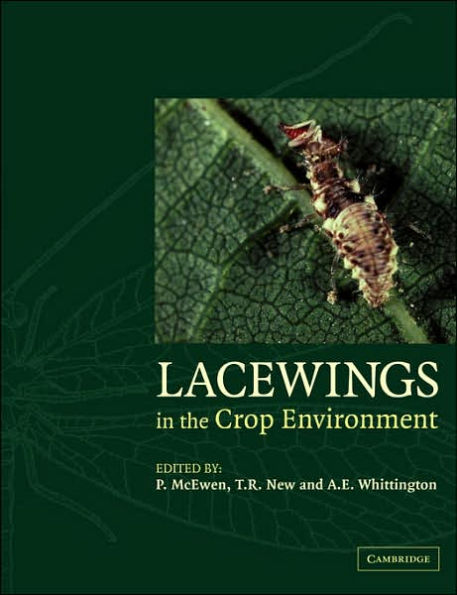Table of Contents
List of contributors; Preface; Part I. Lacewing Systematics and Ecology: 1. Introduction to the Neuroptera: what are they and how do they operate? T. R. New; 2. Introduction to the systematics and distribution of Coniopterygidae, Hemerobiidae and Chrysopidae used in pest management T. R. New; 3. The common green lacewing (Chrysoperla carnea s. lat.) and the sibling species problem C. S. Henry, S. J. Brooks, D. Thierry, P. Duelli and J. B. Johnson; 4. Recognition of larval Neuroptera V. J. Monserrat, J. D. Oswald, C. A. Tauber and L. M. Díaz-Aranda; 5. Ecology and habitat relationships F. Szentkirályi; 6. Natural food and feeding habits of lacewings M. Canard; 7. Outlines of lacewing development M. Canard and T. A. Volkovich; Part II. Lacewings in Crops: Introduction; 8. Lacewings in field crops P. Duelli; 9. Lacewings in fruit and nut crops F. Szentkirályi; 10. Lacewings in vegetables, forests and other crops F. Szentkirályi; Part III. Principles: Introduction; 11. The use of lacewings in biological control L. J. Senior and P. K. McEwen; 12. Mass-rearing, release techniques and augmentation D. A. Nordlund, A. C. Cohen and R. A. Smith; 13. Features of the nutrition of Chrysopidae larvae and larval artificial diets I. G. Yazlovetsky; 14. Ecological studies of released lacewings in crops K. M. Daane; 15. Sampling and studying lacewings in crops T. R. New and A. E. Whittington; 16. Interactions with plant management strategies H. Vogt, E. Viñuela, A. Bozsik, A. Hilbeck and F. Bigler; 17. Lacewings, biological control and conservation T. R. New; Part IV. Case Studies: Introduction; 18. Micromus tasmaniae: a key predator on aphids on field crops on Australasia? P. A. Horne, P. M. Ridland and T. R. New; 19. Preliminary notes on Mallada signatus (Chrysopidae) as a predator in field crops in Australia P. A. Horne, T. R. New and D. Papacek; 20. An evaluation of lacewing releases in North America K. M. Daane and K. S. Hagen; 21. Chrysoperla externa and Ceraeochrysa spp.: potential for biological control in the New World tropics and subtropics G. S. Albuquerque, C. A. Tauber and M. J. Tauber; 22. Comparative plant substrate specificity of Iberian Hemerobiidae, Coniopterygidae and Chrysopidae V. J. Monserrat and F. Marin; 23. Lacewings in Sardinian olive groves R. A. Pantaleoni, A. Lentini and G. Delrio; 24. Lacewing occurrence in the agricultural landscape of Pianura Padana R. A . Panataleoni; 25. Lacewings and snake-flies in Piedmont vineyards (northwestern Italy) R. A. Pantaleoni and A. Alma; 26. Control of aphids by Chrysoperla carnea on strawberry in Italy M. G. Tommasini and M. Mosti; 27. Artificial overwintering chambers for Chrysoperla carnea and their application in pest control P. K. McEwen and Ç. Sengonca; 28. Lacewings in Andalusian olive orchards M. Campos; 29. The green lacewings of Romania, their ecological patterns and occurrence in some agricultural crops M. Paulian; 30. Biological control with Chrysoperla lucasina against Aphis fabae on artichoke in Brittany (France) J. C. Maisonneuve; Part V. Conclusion: 31. Lacewings in crops: towards the future P. K. McEwen, T. R. New and A. E. Whittington; Taxonomic index; General index.




